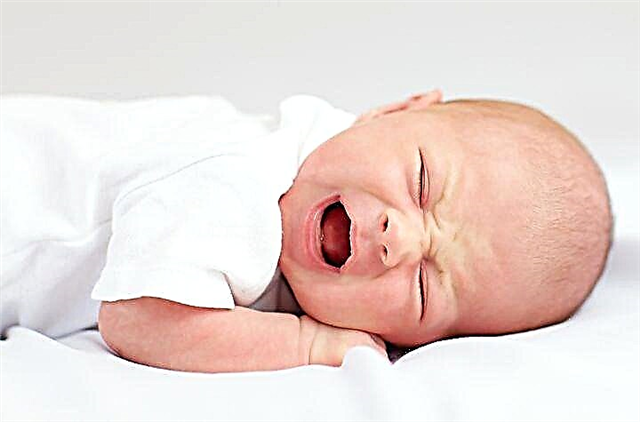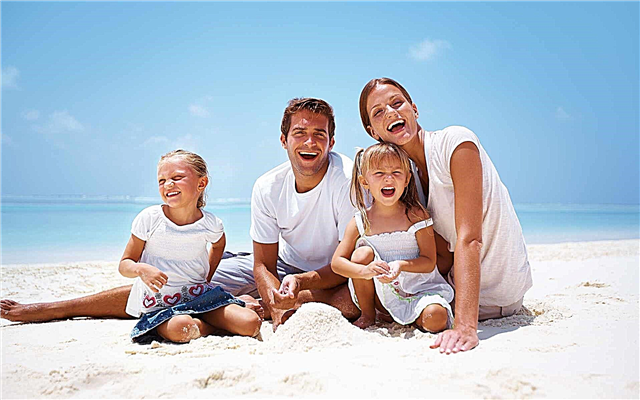Allergies or prickly heat in infants is quite common. It is important to be able to distinguish between them in order to help the baby, relieving him of the rash. Miliaria usually goes away on its own, allergies must be treated under the supervision of doctors.

Baby
What is prickly heat in babies
Prickly heat is a reaction of the baby's skin to high temperature. When he is hot, he begins to sweat heavily. The rate of evaporation of liquid from the skin surface is very low. Sweat glands are not working perfectly, so irritation appears. It is noticeable precisely in those places that are difficult to ventilate:
- In various folds on the body and in hard-to-reach places: armpits, on the neck, behind the ears;
- Under the diaper, in the gluteal folds, groin, on the lower back;
- On the folds, elbows and knees.
It is the uncomfortable conditions that cause sweating, when the baby is wrapped up, the windows are kept closed. Therefore, most often it manifests itself in the summer, when young parents are afraid of any draft, but the comfortable temperature for a child is 18-20 degrees. Fresh air is extremely necessary for him, as for any adult. The same goes for regular wet cleaning.
Note! Prickly heat can manifest itself during a baby's illness, accompanied by an increase in body temperature. Sweat does not have time to evaporate from the surface of the skin, which causes redness.
What is an allergy in babies
Allergy in infants is triggered by certain factors:
- food;
- cosmetics;
- animal hair;
- medicines;
- pollen of plants;
- harmful toxic substances.
It does not appear immediately, but after a certain time after the action of an undesirable factor. The interval between contact with the irritant and the appearance of the first symptoms can be 2-3 days or drag on for a couple of weeks.
Allergy requires treatment and elimination of the cause of its occurrence. It is not always easy to understand what exactly caused the painful skin reaction. Therefore, it is important not to introduce several products into the baby's diet at once, to use only proven baby care products. Be sure to watch his reaction after visiting new places.
Differences between allergies and prickly heat
When a child first develops a rash, parents are at a loss as to whether it might be prickly heat or allergies. Such diagnoses are usually given to babies under one year old, not counting viral diseases. Therefore, it is important to know how to distinguish prickly heat from allergies in infants in order to determine the tactics of treatment.

Rash
Note! Miliaria usually does not require treatment and goes away on its own. The main thing is to normalize indoor conditions and dress the child based on the temperature at home and outside.
If spots appear on the baby's skin, you need to undress it and leave it for a while. If prickly heat is on the body, then air baths will quickly get rid of it. The spots will lighten and become less noticeable, gradually disappear.
Most often, prickly heat does not cause discomfort. The spots do not itch or itch, which is not the case for an allergic reaction. In the latter case, the blisters grow, covered with a crust that is rough to the touch. They bother the kid, he can comb the inflamed areas to blood. In this case, the baby's condition worsens:
- Becomes whiny, restless;
- The temperature may rise;
- Runny nose, coughing and sneezing are common;
- Sometimes it is accompanied by a stool disorder.
Note! With prickly heat, intoxication of the body does not occur. There are no changes in the infant's behavior.
You can suspect the presence of an allergy if something new has happened in the child's life over the past week or two:
- Replacement of the mixture;
- The appearance of new products in the menu;
- Buying bed linen or other laundry detergent;
- Walk in the park with flowering trees or meet pets;
- Mom's eating junk food if the baby is breastfed.
Allergies appear not only in folds and folds. It occurs on exposed skin, on the cheeks, abdomen, or back. This is one of the main differences worth paying attention to. Also, allergies can be observed on the mucous membranes. So the spread in the area of the nasopharynx, throat can provoke Quincke's edema. Therefore, it is important not to self-medicate, but if you suspect an allergy, contact your pediatrician. If necessary, he will refer you to a narrow specialist for additional advice. Prickly heat is precisely a skin reaction; it never forms on the mucous membrane.
Allergy spots are more pronounced, usually bright red and have a larger diameter. With prickly heat, they are small, similar to points, capable of merging, in which case they seem more voluminous. Their boundaries are always easy to distinguish upon close examination.

Allergy
Types of prickly heat
Infants have one of three types of prickly heat. Their description will help not to confuse a rash with an allergy:
- Crystalline. It occurs most often and usually occurs in newborns. Light blisters, white or pale yellow, are visible on the body. They are localized on the upper half of the body and face. When they come into contact with clothing, they can burst. This is not a painful process and does not cause any inconvenience to the baby. The skin looks like peeling, but quickly takes on a normal look. Bubbles are capable of merging, which is why their boundaries are erased. They pass quickly, usually in two days;
- Deep. Bubbles are hardly distinguishable on the skin, as they practically coincide with its color. They are small, usually no more than 3 millimeters in diameter. They appear almost instantly, in response to heat or insufficient hygiene, for example, when cream remains in the folds, or the baby is rarely bathed. The bubbles also disappear quickly, they can become invisible after 3-4 hours;
- Red. Miliaria usually appears on the neck, armpits, and groin area. The blisters are bulky and pimple-like and may itch and itch. The skin around the formations turns red, swells slightly, so this type of prickly heat is the most noticeable. Manifestations intensify if the room is too hot and stuffy.

Red prickly heat
Prerequisites for the development of allergies and prickly heat
Prickly heat occurs when the baby is uncomfortable. It is not related to the child's immunity and state of health. Only temperature can provoke its growth, this is only a concomitant reaction. It is explained only by the imperfection of the sweat glands.
In the first months of life, parents often do not understand how to dress a child to make him comfortable. They listen to the advice of grandmothers and use as many layers as possible, even in hot summers. Therefore, children overheat and their skin reacts with prickly heat. Blisters often appear in the diaper area, in the groin folds, on the butt. No matter how breathable diapers are provided by manufacturers, it is worth leaving the baby naked for a while, especially in the warm season. The skin needs to breathe.
Allergies are more common in children who are born prematurely. Their immunity is weakened, so they react painfully to adaptation to the environment.
Note! Babies who are breastfed are less susceptible to allergic reactions. Early refusal from mother's milk and the constant change of mixtures negatively affect the condition of the baby.
How to avoid prickly heat and allergies
To prevent prickly heat from bothering the baby, you need to follow simple recommendations:
- Dress your baby for the weather;
- Make sure that the humidity in the room is 50-70 percent, and the temperature does not exceed 22 degrees;
- Constantly ventilate the room, providing fresh air;
- Avoid synthetic materials when purchasing clothes and bedding made from natural fabrics;
- Do not overuse soap. Be sure to choose products made specifically for babies. There are creams, ointments and powders that contain zinc. It helps to dry the delicate skin of the baby;
- Bathe your baby regularly;
- Arrange air baths, leaving the child without clothes for a while.
Allergies can be genetically transmitted. The risk of developing it increases if painful reactions are inherent in both parents.
To minimize the possibility of food allergy, as the most common manifestation, will help:
- Introduction of complementary foods according to recommendations, exclusion of allergenic products for up to a year. These include, for example, citrus fruits, exotic fruits and vegetables, nuts, honey, milk;
- Reasonable nutrition of the mother both during pregnancy and lactation. This is especially true for the first month of breastfeeding, when the baby is just beginning to get acquainted with the outside world. Any unwanted product in large quantities can lead to an unwanted reaction;
- Breastfeeding for at least 6 months.

Kid on gv
If an allergy manifests itself up to a year, then it is highly likely that it will persist for life. Therefore, it is better to delay the moment of entering prohibited products in the menu. After a year, babies react more calmly to food, negative reactions are noticeable much less often.
Children with dry skin are more prone to skin problems. It peels off, and is injured by contact with clothing or scratching. This leads to the formation of inflammation. To prevent this, you need to select products suitable for the baby. Not all creams are universal, their composition is different. It is necessary to focus specifically on the condition of the skin of the newborn.
Note. Allergies to animal hair, dust, odors usually appear after a year. It cannot be completely neutralized; it will make itself felt throughout life.
It is not always immediately clear how to distinguish prickly sweat from allergies in infants, especially when faced with such manifestations for the first time. It is enough to analyze the events preceding the onset of the rash in order to make the correct diagnosis. A consultation with a pediatrician will not hurt in any case, because allergies require treatment. You should not blindly believe folk remedies and the recommendations of friends in order to prevent a deterioration in the baby's well-being.



